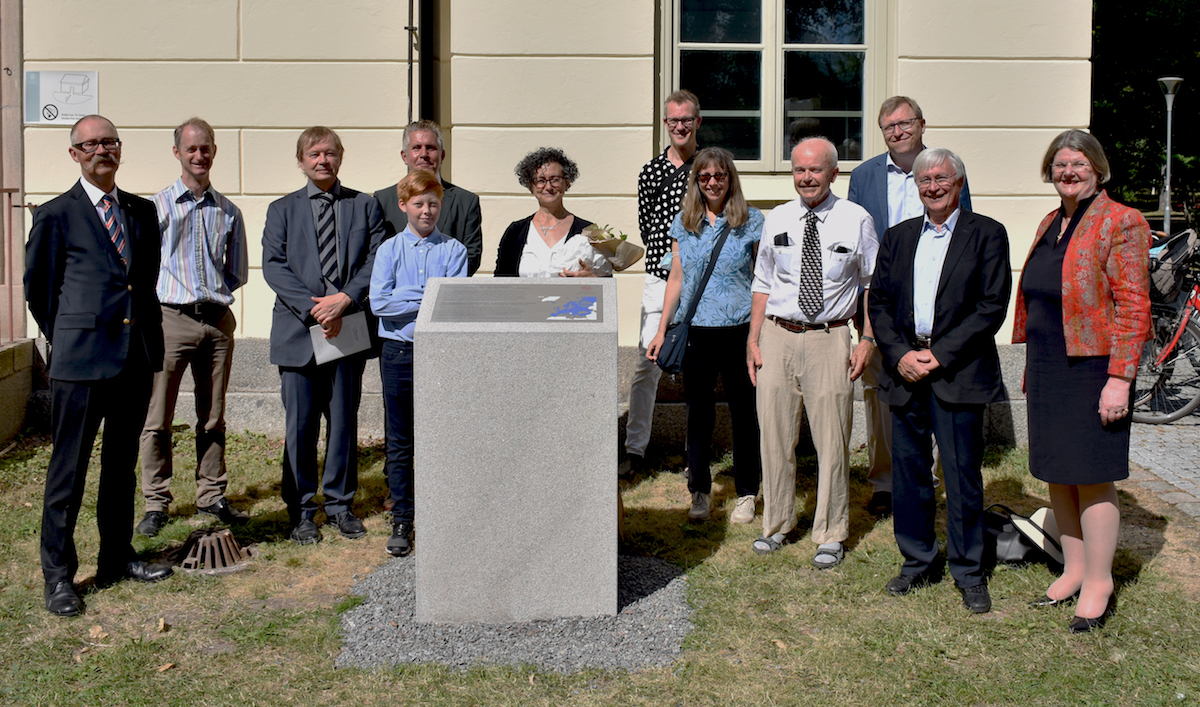Author: Carla Puglia
On 6th August 2021, a
new EPS Historic Site was inaugurated in Uppsala, Sweden. This is the
third EPS site in Sweden and it is dedicated to Anders Jonas Ångström.
The place where the plaque is located is a building in central Uppsala,
next to the Carolina park (Thunbergsvägen 3). This building was
originally a chemical laboratory (“Gamla Kemikum”), converted in 1856
into a laboratory for experimental physics and physics teaching. As part
of the physical institute (“Fysikum”), it hosted physics research for
143 years, until several university departments within natural sciences
moved to the newly built Ångström laboratory, named after both Anders
Jonas Ångström and his son Knut Ångström.
This EPS award is a
recognition of the work by A. J. Ångström who performed fundamental
studies that contributed to many fields of physics and, moreover,
promoted experimental research and introduced experimental laboratory
training in physics education. A. J. Ångström studied a wide range of
physical phenomena such as the variations of the terrestrial magnetic
field, the comets, the theories of elasticity and heat conductivity and,
most importantly, he was a pioneer in the field of experimental optical
spectroscopy. Ångström performed meticulous measurements of the Sun and
produced the first solar atlas with wavelengths in the metric system,
which also led to the introduction of the unit of 1 Ångström = 10–10
m, widely used in modern spectroscopy and crystallography. As part of
his work in optics, he also identified several newly discovered
absorption lines that had not yet been identified on Earth. In 1870,
upon being elected to the Royal Society in London, his pioneering work
“Optical Investigations” (1853) was quoted as containing the fundamental
principles of nearly all that has been done since. In 1872, Ångström
became the first Swedish physicist to be awarded the Rumford medal, “for
his researches on spectral analysis”.
The EPS Historic Site in
Uppsala is marked by a plaque on a stone fundament just outside the
building that hosted his laboratory and his many activities.
The
inauguration ceremony was introduced by Eric Stempels (Dept. of Physics
and Astronomy, UU) who has also been the promoter of the EPS site in
Uppsala and contributed to the design and to the text of the plaque.
Then Johan Tysk, Dean of the Faculty of Natural Science and Technology
of Uppsala University, gave a brief review of the importance of the work
of A. J. Ångström for research fields still very alive and successful
at our faculty. The recognition of the historic importance of many
scientists active in Uppsala and the close collaboration between the
university and Uppsala City were in the focus of the contribution by
Magnus Åkerman, the second vice chair of Uppsala City. Then Karl
Grandin, chair of the EPS Historic Sites Committee, concluded with the
overview of the significance of the EPS Historic Sites and of the
scientists that they commemorate. The plaque was unveiled by the Vice
President of EPS, Petra Rudolf, together with Rasmus Nordin, a young
descendant of Anders Jonas Ångström, who took part in the ceremony
together with his grandmother and his mother, all descendants of A. J.
Ångström. After the inauguration, the participants visited and left
flowers on the grave of A. J. Ångström at the Uppsala Cemetery, very
close to the new EPS Historic Site.

The plaque of the EPS Historic Site celebrating Anders Jonas Ångström was unveiled by the EPS Vice President Petra Rudolf (right end) - Image credit: Camilla Thulin